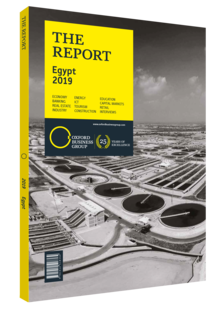Egyptian agro-industrial producers face export and domestic consumption challenges
With fertile agricultural land and a large pool of human resources, Egypt’s competitive advantages for agro-industry have enabled the expansion of one of the country’s most important segments. Its large population has made Egypt an attractive market for both domestic and foreign agro-industrial producers. Despite this, the segment has lagged behind in reaching its full potential due to volatile economic conditions and insufficient distribution networks. Domestic consumption of food products has also been somewhat impacted by inflation, prompting local producers to adapt to the changing environment. Better prospects are likely to come from a government plan to expand manufacturing capacity across the southern regions of the country. The segment’s development will require coordination between agricultural production and agro-industrial processors, especially for the country’s key agricultural crops. For instance, only around 3% of the total orange production – which reached 3.4m tonnes over the 2017/18 season – is processed locally before being exported. About 51% of production is exported in bulk, and 46% of the output is consumed domestically. Despite the need to better utilise local production, the segment has moved forward. Driven by a large domestic market and increased links with various export markets, the agro-processing and food manufacturing market has grown in size and variety. As of 2018 there were 7000 food manufacturing firms based in the country, with annual sales of $22.2bn.
Fertile Ground
The sector has long attracted international players to set up operating units in the country. In 2017 Nestlé’s local baby food unit had over $23m in sales in Egypt and another $2.1m in instant soup, while Kellogg’s sold over $3.2m in locally produced breakfast cereal, and the Egyptian unit of chocolate producer Cadbury had sales in excess of $107m. Local producers also saw promising results in 2017. Juhayna, a dairy and juice producer, sold over $318m of milk and $268.9m in yoghurt products, while Modern Bakeries reached $1.7bn in sales of its packaged bread and other baked goods. The biggest foreign and domestic largescale companies, which operate in multiple product categories, account for around $8bn in annual sales. The agro-industrial sector requires the use of some imported inputs, which has exposed companies to higher production costs amid the country’s economic challenges. The depreciation of the pound in late 2016 after the government decided to float the currency has brought both challenges and opportunities. It pushed inflation up and added to the cost of manufacturing some products, making pricing and position strategies by producers key to maintaining their market share.
However, a weaker pound has also made Egyptian agricultural and agro-industrial products more attractive to foreign markets. “Devaluation has had a positive impact on industry, particularly for exports, which is an area that needs to attract more focus. Support for industrial exports is a key factor in the decision to invest, alongside the competitive labour costs and strong logistics infrastructure which Egypt already has,” Sherif El Gabaly, chairman and managing director of fertiliser company Polyserve, told OBG.
Export Obstacles
On top of local challenges, food producers in Egypt also have to deal with obstacles to expand their market share abroad. Hani Berzi, chairman and managing director of Egypt’s Food Export Council, told local media in December 2018 that the council expected food exports to decline by 3% in the end-of-the-year figures. This was in contrast to the 10% increase in food exports which the council initially estimated in early 2018.
There are both are both internal and external reasons behind this, according to the export council. Egyptian food and beverage exporters have been impacted by a two-year delay in the payment of government export subsidies. In addition, the continued instability of a number of markets in the surrounding region has made it more difficult for exporters to operate.
You have reached the limit of premium articles you can view for free.
Choose from the options below to purchase print or digital editions of our Reports. You can also purchase a website subscription giving you unlimited access to all of our Reports online for 12 months.
If you have already purchased this Report or have a website subscription, please login to continue.

